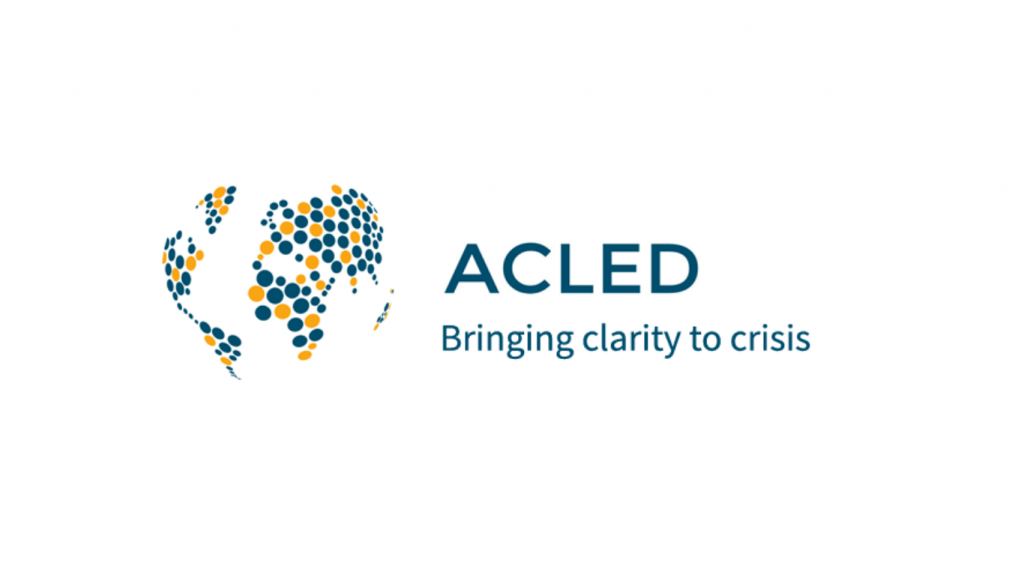Last week in the East Asia Pacific region, civilians were killed during a clash between the Myanmar military and a local resistance group near a Buddhist religious site in Myanmar’s Mon state. The United League of Arakan/Arakan Army (ULA/AA) attacked and occupied a border guard police outpost in Rakhine state, while the Restoration Council of Shan State/Shan State Army-South (RCSS/SSA-S) clashed with the Pa-Oh National Liberation Organization/Pa-Oh National Liberation Army (PNLO/PNLA) in southern Shan state. North Korea carried out another series of missile tests. In the Philippines, fighting between the communist New People’s Army (NPA) and state forces intensified. Meanwhile, police shot three militant detainees dead after they took a detained former senator hostage during an attempted jailbreak.
In Myanmar, a local resistance group attacked a military checkpoint at the foot of the Kyaiktiyo Golden Rock Pagoda, a famous Buddhist pilgrimage site, in Mon state on 12 October. Three women pilgrims were killed in the crossfire. Eighteen others, including a police officer, were injured. The resistance group and military accused each other of killing the civilians (Myanmar Now, 13 October 2022).
Elsewhere, in Rakhine state, the ULA/AA attacked and occupied the Lait-ya border guard police outpost in Maungdaw township on 10 October, inflicting police casualties and seizing weapons and ammunition (Irrawaddy, 11 October 2022). One ULA/AA member was killed in the fighting (Narinjara, 10 October 2022). Members of another border guard police outpost in nearby Kyein Chaung village fired artillery at the ULA/AA during the clash. The ULA/AA claimed the Lait-ya border guard police outpost had been responsible for artillery attacks on civilians (Narinjara, 11 October 2022). Fighting between the two groups has intensified over the past few months. These trends contribute to the 717% increase in average weekly violent events in Rakhine state in the past month relative to the weekly average for the preceding year flagged by ACLED’s Subnational Threat Tracker. The Subnational Tracker also warned of increased violence in Rakhine state during the preceding four weeks.
In southern Shan state, fighting broke out between the RCSS/SSA-S, an ethnic Shan armed group, and the PNLO/PNLA, an ethnic Pa-Oh armed group, on 11 October in the reportedly PNLO/PNLA-controlled Ka Du Gyi area of Mawkmai township. The PNLO/PNLA claimed that the clash resulted from the RCSS/SSA-S’s failure to inform them of troop movements, as required by the 2015 Nationwide Ceasefire Agreement (Shan Herald Agency for News, 13 October 2022). The clash came after the RCSS/SSA-S invited ethnic armed organizations operating in Shan state and other areas to meet to ease tensions and to discuss potential cooperation (Thanlwin Times, 11 October 2022). ACLED’s Subnational Surge Tracker warned of increased violence in southern Shan state during the preceding four weeks. Violence in southern Shan state is both common and highly volatile; it is considered an area of ‘extreme risk’ by ACLED’s Volatility and Risk Predictability Index.
North Korea continued to carry out missile tests last week. On 9 October, North Korea test-fired two short-range ballistic missiles into the sea off the country’s east coast, before test-firing two long-range cruise missiles into the sea off its west coast on 12 October. On 14 October, North Korea flew 10 warplanes close to the border with South Korea, before launching a short-range ballistic missile into the sea off its east coast and firing hundreds of artillery shells into a maritime buffer zone surrounding the Northern Limit Line (AP, 14 October 2022). These activities came after North Korea’s defense ministry criticized the recent redeployment of a US aircraft carrier near the Korean Peninsula (YNA, 6 October 2022).
Last week in the Philippines, fighting between NPA rebels and the military intensified, with clashes reported in Bicol and Soccsksargen, as well as Central, Western, and Eastern Visayas. These trends contribute to a 75% increase in violent events in the Philippines over the past week relative to the weekly average for the preceding month, as flagged by ACLED’s Conflict Change Map. In Western Visayas, Himamaylan city saw fierce clashes on 8, 10, and 12 October, leaving a suspected high-ranking NPA leader, Romeo Nanta (also known as Juanito Magbanua), dead. The NPA claimed that Nanta was not killed in the clash, but rather, captured and summarily executed (Rappler, 11 October 2022). Human rights group Karapatan condemned alleged military abuses against civilians during the clashes, including allegedly indiscriminate artillery fire and aerial bombing (Karapatan, 12 October 2022). As a result of the clashes, the military implemented lockdowns in several affected barangays, and the city government declared a state of calamity (Manila Bulletin, 12 October 2022). Around 15,000 villagers were also evacuated from the area (Panay News, 12 October 2022).
Meanwhile, a high-profile jailbreak attempt led to the deaths of three detained Islamist militants in Quezon City last week. On 9 October, three militant detainees — alleged members of Abu Sayyaf and Dawlah Islamiyah — attempted to escape from the Philippine National Police Custodial Center, wounding a police officer with an improvised knife and taking detained former Senator Leila de Lima hostage during the attempt. Responding police officers shot the militant detainees dead and freed de Lima, who was lightly wounded. The incident led to renewed calls for the release of de Lima, a prominent critic of former President Rodrigo Duterte. De Lima has been held in police custody since February 2017 on drug-related charges, which human rights organizations and opposition groups view as politically motivated (HRW, 4 May 2022; Manila Bulletin, 9 October 2022).
Note: This dashboard automatically updates to cover the latest four weeks of data released by ACLED. Use the date filters to view data for the one-week period covered by this Regional Overview.


